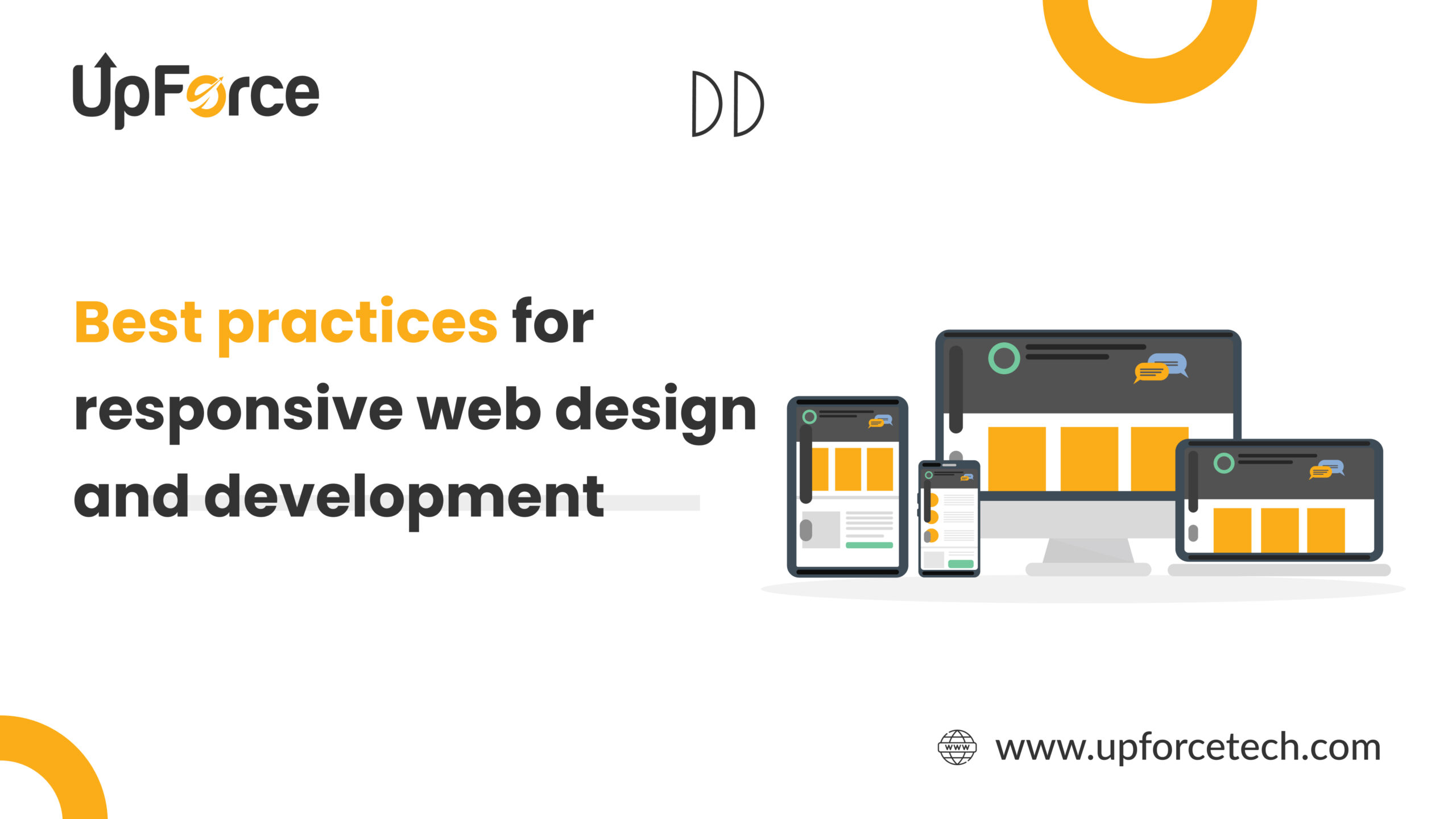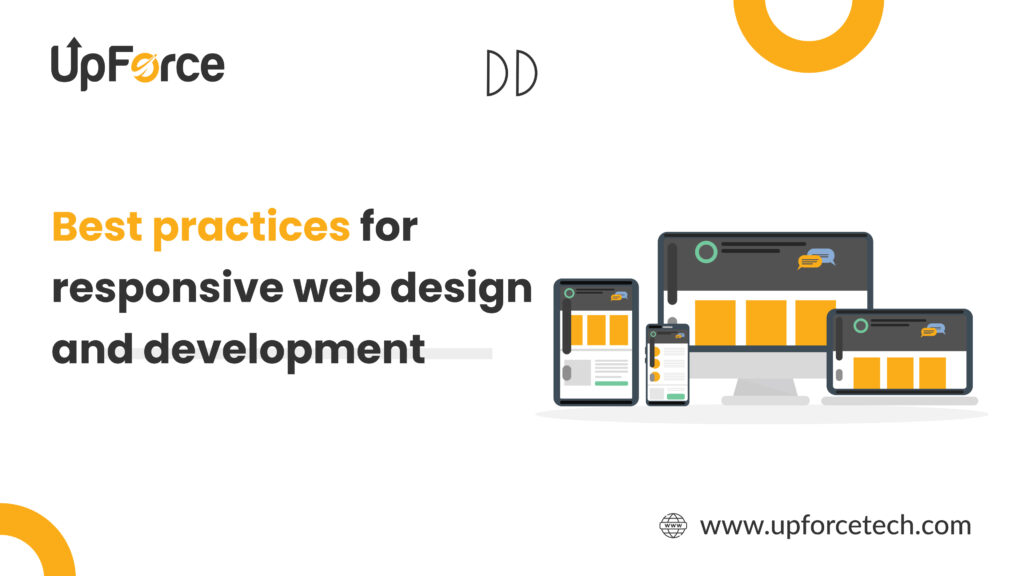Best Practices for Responsive Web Design and Development
Table of Contents
Best Practices for Responsive Web Design and Development
In today’s mobile-first world, responsive web design is not just a trend, it’s a necessity. As users access websites from a wide range of devices—desktops, tablets, and smartphones—ensuring that your site looks and functions well across all platforms is critical. This blog will delve into the best practices for responsive web design and development to help you create a seamless user experience, improve your SEO, and keep users engaged.

What is Responsive Web Design?
Responsive web design (RWD) refers to the approach of building websites that automatically adapt to the size and orientation of the user’s device. Whether someone is viewing your website on a desktop computer or a smartphone, a responsive design ensures the content scales and rearranges itself to maintain usability and visual appeal.
Responsive websites rely on flexible grids, layouts, and images, as well as CSS media queries, to ensure that the design works fluidly across different screen sizes.
Why is Responsive Web Design Important?
-
Mobile Usage is Dominant
More than half of all internet traffic now comes from mobile devices. A site that isn’t mobile-friendly risks losing a significant portion of its audience. -
SEO Benefits
Google considers mobile-friendliness as a ranking factor. Having a responsive design can boost your site’s SEO and help it rank higher in search engine results. -
Improved User Experience
A responsive design provides a seamless experience across all devices, reducing bounce rates and keeping users engaged longer.
Understanding Responsive Web Design
Before diving into the best practices, it’s essential to grasp the core principles of responsive web design. Here are the key concepts:
- Fluid Grids: Using flexible grids that adjust to different screen widths, ensuring elements scale proportionally.
- Media Queries: Employing CSS media queries to apply different styles based on screen size, device orientation, and resolution.
- Flexible Images: Optimizing images to adapt to various screen sizes without compromising quality.
- Touch Optimization: Considering touch interactions and gestures when designing for mobile devices.
Best Practices for Responsive Web Design and Development
-
Use a Fluid Grid Layout
A fluid grid allows the website layout to resize proportionally, rather than relying on fixed dimensions. By using percentage-based widths, elements adjust themselves according to the screen size, making the design more flexible.- Pro Tip: Use CSS frameworks like Bootstrap or Foundation, which come with pre-built responsive grid systems to simplify the process.
-
Optimize for Touchscreen Navigation
Responsive design must cater to touch-enabled devices like smartphones and tablets. Ensure that buttons, links, and other interactive elements are large enough to be easily tapped without causing frustration.- Pro Tip: Stick to a minimum touch target size of 48×48 pixels and avoid placing links too close together to prevent accidental taps.
-
Flexible Images and Media
Ensure that your images, videos, and other media assets scale appropriately across different screen sizes. Use CSS’smax-widthproperty to ensure images resize within their container without breaking the layout.- Pro Tip: Use the
srcsetattribute in HTML5 for responsive images that load different versions of an image based on screen size, improving performance and loading speed.
- Pro Tip: Use the
-
CSS Media Queries
Media queries allow developers to apply different CSS rules depending on the device’s characteristics, such as its width or height. This enables more precise control over how your design appears on different devices.- Pro Tip: Start by designing for the smallest screens (mobile-first) and use media queries to progressively enhance the design for larger devices.
-
Responsive Typography
Font sizes should scale according to screen size for optimal readability. Use relative units such asemorreminstead of fixed units like pixels for better scalability.- Pro Tip: Set a base font size using CSS, and then use relative values to ensure that typography adjusts proportionally to the screen size.
-
Prioritize Performance
Loading time plays a huge role in user experience and SEO. Ensure that your responsive design doesn’t compromise the site’s performance. Optimize images, leverage browser caching, and minimize HTTP requests to improve loading speed.- Pro Tip: Use lazy loading for images and media to ensure that only the necessary elements load when they are in the user’s viewport.
-
Test on Multiple Devices
Don’t just rely on screen simulators or resizing your browser window. Test your website on real devices to ensure it performs well across different operating systems, browsers, and screen sizes.- Pro Tip: Use tools like Google’s Mobile-Friendly Test, BrowserStack, or Responsinator to see how your site performs across various devices.
-
Prioritize Content Hierarchy
On smaller screens, there’s limited space to display content, so make sure that the most important information appears first. Use whitespace effectively to avoid overwhelming users with too much content at once.- Pro Tip: Ensure that navigation menus are easy to access and use, such as collapsing menus into a hamburger icon for mobile screens.
-
Minimize CSS and JavaScript
Heavy CSS and JavaScript files can slow down page loading, especially on mobile networks. Minimize and compress these files to enhance loading speed.- Pro Tip: Use tools like Gulp or Grunt for task automation to minify and concatenate your CSS and JavaScript files.
Case Study: How Responsive Design Improved User Engagement for a Retail Website
A mid-sized retail business saw its mobile traffic increasing but was experiencing high bounce rates and low conversion rates on mobile devices. They hired a design team to overhaul their website with a focus on responsive web design.
By implementing a fluid grid layout, optimizing images for faster load times, and designing a mobile-first navigation system, the company saw a 35% decrease in bounce rates and a 20% increase in mobile conversions within three months. The improved user experience on mobile led to a substantial increase in overall sales and customer satisfaction.
Key Elements of Responsive Web Design
| Responsive Design Element | Best Practice |
|---|---|
| Fluid Grid Layout | Use percentage-based widths for flexible layouts |
| Touchscreen Navigation | Ensure interactive elements are large enough for easy tapping |
| Flexible Images and Media | Use max-width property and srcset attribute for scalable images |
| CSS Media Queries | Use media queries to apply different styles based on device characteristics |
| Responsive Typography | Use relative units like em or rem for scalable text |
| Performance Optimization | Optimize images, leverage caching, and use lazy loading to improve performance |
| Content Hierarchy | Prioritize important content and use whitespace to avoid clutter on smaller screens |
| Test on Real Devices | Test across multiple real devices to ensure compatibility across various screen sizes and browsers |
Responsive web design and development isn’t just a trend—it’s a necessity in today’s digital world. By focusing on a mobile-first approach, using fluid grid systems, and optimizing performance, you can create websites that provide an excellent user experience, improve SEO, and drive more conversions.
How UpforceTech Can Help You Hire the Right Contract Developer
At UpforceTech, we specialize in connecting businesses with highly skilled contract developers who can meet their unique needs. Our rigorous vetting process ensures that you get access to the best talent, whether you need someone with expertise in front-end development, back-end systems, or mobile app development.
Here’s how UpforceTech can support your business:
- Access to a Global Talent Pool: We provide access to a diverse range of developers from around the world, ensuring you find the right fit for your specific project needs.
- Customized Hiring Solutions: Whether you’re looking for short-term contract developers or long-term project-based teams, we tailor our services to fit your requirements.
- Quality Assurance: Every developer in our network goes through a comprehensive screening process to ensure they have the necessary skills and experience to deliver high-quality work.
- Ongoing Support: Our commitment doesn’t end with hiring. We offer ongoing support to ensure a seamless integration of contract developers into your team.
For more information on how to get started with hiring contract developers, visit UpforceTech.
Are you looking to Grow your business with skilled developers? Hire a contract developer today to bring fresh ideas and expertise to your team. Learn how UpforceTech can help!
Sign up for the free Newsletter
Responsive web design is not just about making a website look good on all devices; it’s about providing a seamless and engaging experience for every user.
UpforceTech
FAQs
Responsive web design is an approach to creating websites that adapt to different screen sizes and orientations, providing an optimal user experience across devices.
Google ranks mobile-friendly websites higher, so responsive design can improve your search engine ranking.
Use a fluid grid layout, optimize images, and test your website on real devices to ensure it performs well across various screen sizes.
CSS frameworks like Bootstrap and Foundation, as well as tools like Google’s Mobile-Friendly Test and BrowserStack, can help you design and test responsive websites.
Yes, responsive design ensures that your website looks good and functions well on all screen sizes, including desktops, tablets, and smartphones.
Mobile-first design is an approach where you design for mobile screens first and then progressively enhance the design for larger screens.
Optimize your images, minify CSS and JavaScript, and use lazy loading for media to improve the performance of your responsive website.
A media query allows you to apply different CSS styles depending on the characteristics of the device, such as screen width
Absolutely. A responsive design is critical for eCommerce websites to ensure a smooth user experience across all devices and increase mobile sales.
Common mistakes include neglecting performance, failing to optimize for touchscreens, and not testing on real devices.

